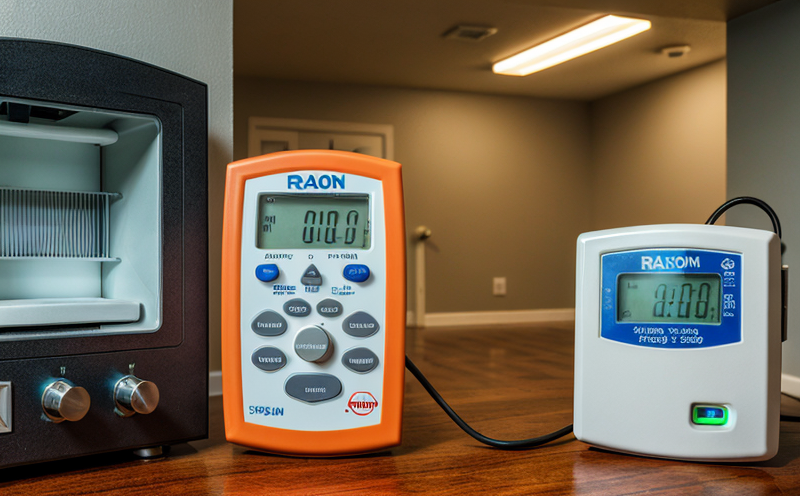ISO 11665-8 Radon Exposure Assessment in Indoor Environments
The ISO 11665-8 standard provides a framework for assessing radon exposure levels within indoor environments. This protocol is particularly critical as radon, a colorless and odorless gas, can accumulate indoors and pose significant health risks to occupants over prolonged periods.
Radon is the second leading cause of lung cancer after smoking, making accurate assessment crucial for ensuring public safety. The standard outlines specific methodologies for measuring radon concentration levels in various indoor spaces such as residential homes, offices, schools, and other enclosed environments where people spend significant time.
The testing process involves selecting appropriate sampling devices based on the duration required to capture sufficient data points. These devices are then deployed according to predefined protocols within each designated area. After collection, samples are sent back for analysis at accredited laboratories equipped with state-of-the-art instrumentation capable of detecting even trace amounts of radon.
Accurate interpretation of results is paramount; hence, compliance officers must understand not only the technical aspects but also the implications for occupant health and safety. By adhering to ISO 11665-8 guidelines, organizations can ensure that their indoor environments meet stringent regulatory requirements while minimizing potential risks associated with radon exposure.
Implementing this standard helps create safer living spaces by identifying problem areas early on through comprehensive monitoring programs. Such proactive measures contribute significantly towards maintaining high standards of occupational and public health across sectors.
Why It Matters
The importance of adhering to ISO 11665-8 cannot be overstated, especially for organizations operating in environments where people spend considerable time. Indoor radon exposure is a critical concern due to its direct link with lung cancer development.
By implementing this standard, businesses can protect their workforce and customers from unnecessary health risks associated with prolonged radon inhalation. Compliance also ensures adherence to national and international standards set forth by regulatory bodies like WHO (World Health Organization) and EPA (Environmental Protection Agency).
The implementation of ISO 11665-8 demonstrates a commitment to corporate responsibility and sustainability practices. It enhances reputation among stakeholders, including employees, clients, investors, and the community at large.
Moreover, compliance fosters trust in management by showcasing an understanding of potential hazards and willingness to mitigate them effectively. This aligns with broader goals related to employee well-being and organizational resilience against litigation risks stemming from negligence regarding workplace safety issues.
Industry Applications
- Residential homes
- Offices
- Schools
- Healthcare facilities
- Government buildings
- Commercial properties
- Hospitals and clinics
These establishments often have large populations that spend extended periods indoors, making them prime candidates for radon testing under ISO 11665-8.
Quality and Reliability Assurance
To ensure accurate assessment of radon exposure levels in indoor environments, laboratories must adhere strictly to ISO 11665-8 standards during all stages of the testing process—from sample collection through analysis and reporting.
The selection of appropriate sampling devices plays a crucial role in obtaining reliable data. These devices should be calibrated regularly using certified reference materials and maintained according to manufacturer specifications to maintain precision.
Sample preparation involves ensuring that samples are handled correctly from the moment they leave the site until delivery at the laboratory for analysis. This includes proper sealing, labeling, and transportation under controlled conditions to prevent contamination or loss of integrity.
Analytical methods used in ISO 11665-8 include alpha spectrometry, which offers high sensitivity levels necessary for detecting low concentrations of radon. Additionally, the use of statistical analysis techniques helps determine whether detected levels fall within acceptable limits prescribed by relevant regulations.
The final step is reporting findings accurately and transparently to stakeholders, including clients or building owners. Reports should include detailed information about sampling locations, duration, analytical methods employed, and calculated exposure levels along with recommendations for corrective actions if necessary.





